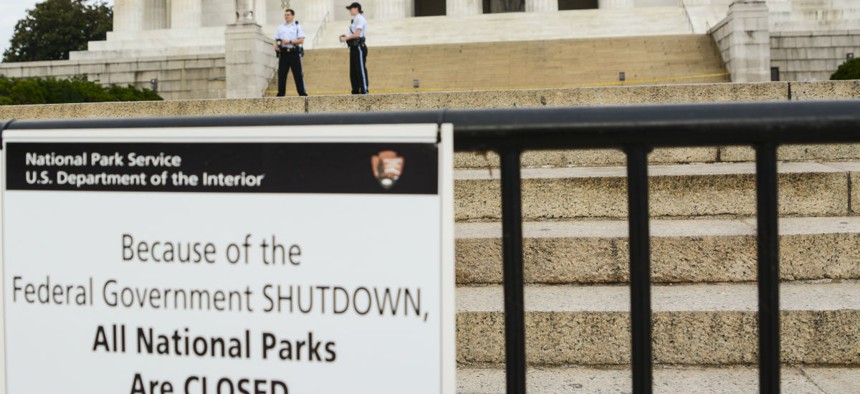Back Pay for Contractors, First Blended Retirement Enrollment Numbers, and More
A weekly round-up of pay and benefits news.
Although the government shutdown is over and Congress has approved back pay for federal employees who were furloughed between Saturday and Monday, one Democratic lawmaker is pushing for a similar measure for contractors.
Del. Eleanor Holmes Norton, D-D.C., a non-voting member of the House, introduced the Low-Wage Federal Contractor Employee Back Pay Act (H.R. 4875) Monday, which would compensate contractors who provide retail, food, custodial or security services to federal agencies for time spent on unpaid leave due to the shutdown.
Norton said in a letter to colleagues to solicit cosponsors that shutdowns of any length can be particularly difficult for federal contractors, who often are paid less and receive fewer benefits than people on the federal payroll.
“Many federal contract workers earn little more than minimum wage and receive few, if any, benefits,” she wrote. “While some are unionized with a little better wage, all are the lowest-paid workers in the federal government and should not be punished because Congress has failed to do its job to keep the government funded.”
If enacted, the bill would ensure compensation for federal contractors in the case of any shutdown “which begins in fiscal year 2018,” meaning it would apply not only to the most recent lapse in appropriations, but it also would apply if Congress fails to reach a spending deal any time between now and Sept. 30.
Meanwhile, officials at the Thrift Savings Plan unveiled the first enrollment figures for the new Blended Retirement System, which for the first time offers an employer contribution to the 401(k)-style retirement savings program for members of the military, in exchange for a less generous defined benefit pension. Beginning on Jan. 1, the government began to automatically enroll new recruits. Current service members have until the end of 2018 to opt into the program.
Tee Ramos, director of retirement services at the Federal Retirement Thrift Investment Board, which governs the TSP, said that 71,659 service members had opted into blended as of Jan. 12. Leading enrollment was the Air Force with 19,880, followed by 17,000 in the Army and 14,748 in the Navy. More than 12,000 reservists also signed up for the program.
“We’re still continuing calls on a weekly and biweekly basis with the uniformed services, and we’re answering questions daily,” Ramos said of the program rollout. “There have been a couple of warning messages coming out of the payroll transmissions, and we’re working with them and tweaking the language [to fix that]. At this point, it’s just little, small stuff we’re doing to add value to the process.”
Officials said it is too early to tell if opt-in statistics are in line with expectations, as the agency’s projections were based on the entire year. And it is too early to tell if one service is outperforming others in terms of its messaging to troops.
“The data is so new that I don’t think we can say this is a trend,” said TSP Executive Director Ravindra Deo. “These numbers will probably bounce around for the next few months.”
Although the launch of blended has gone smoothly, TSP officials have noted one recent area of concern: wait times on the TSP Thriftline. Ramos said the agency saw “significantly increased” wait times for participants in recent months, despite a recently implemented increase in the call center’s capacity.
“We just had a tech refresh that quadrupled the number of lines coming in,” Ramos said. “We staffed up for it, but not enough.”
Ramos said with the recent upgrade to the call center came new hardware and software, and it is taking time for staff to get used to the new equipment. A new effort to validate participants’ emails and phone numbers—intended to make it easier for the agency to send important information to customers—has increased the overall length of calls.
“That’s a whole new call stream that every participant [who calls in] is getting,” Ramos said. “We’re right around 280 staff, but I’m targeting around 320 in the next three to four months. That’s an average figure; turnover is always high at call centers, and while we have lower attrition than a normal call center, it’s still higher than typical government employees.”




